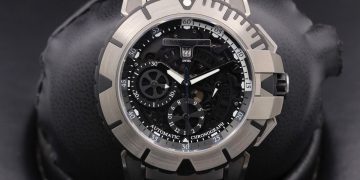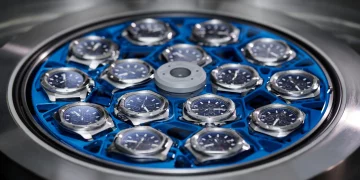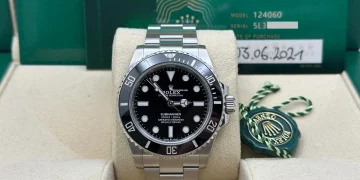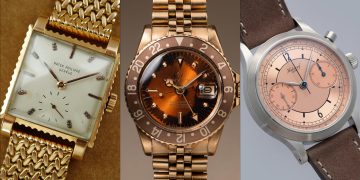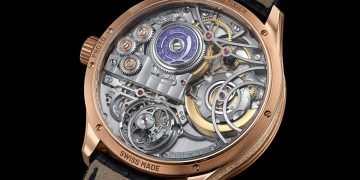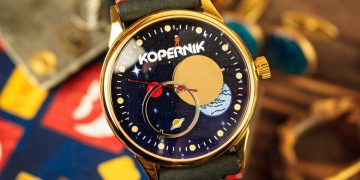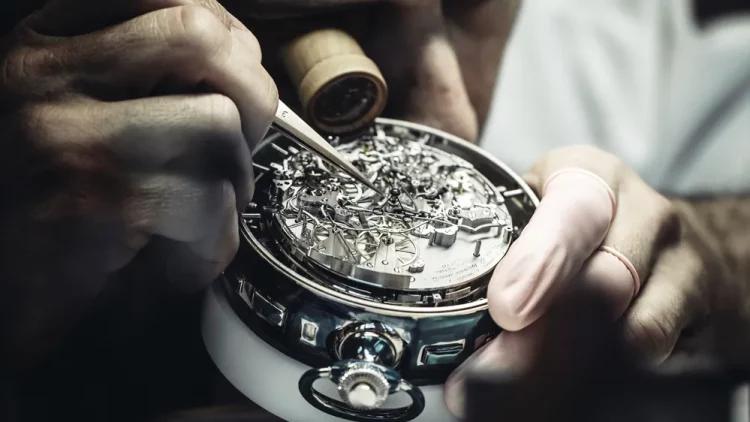As time passes, wear and tear can take a toll on your luxury watch, and there may come a time when certain parts need to be replaced. Whether it’s the crown, movement, glass, or bracelet, choosing the right replacement parts is crucial. When considering replacements, you’ll typically have two options: genuine (original) parts or aftermarket (compatible) parts. Each option has its pros and cons, and the decision can significantly impact your watch’s performance, aesthetic, and even its value.
In this article, we’ll explore the factors you should consider when choosing between genuine parts and aftermarket parts for your watch, helping you make an informed decision that suits both your needs and your budget.
1. What Are Genuine and Aftermarket Watch Parts?
Before we dive into the specifics, let’s clarify what genuine and aftermarket parts are:
- Genuine (Original) Parts: These are parts that are manufactured by the brand that made your watch. They are made to the exact specifications of the original components, ensuring that the fit, function, and aesthetic match the original design. Genuine parts typically carry the brand’s logo and are available through authorized dealers or directly from the manufacturer.
- Aftermarket (Compatible) Parts: These are parts made by third-party manufacturers that are designed to fit and function like the original parts but are not produced or endorsed by the brand. Aftermarket parts are often marketed as cost-effective alternatives to genuine parts, offering similar functionality or aesthetics at a lower price.
2. Why Opt for Genuine Parts?
While aftermarket parts may seem tempting due to their lower cost, there are compelling reasons why many watch owners prefer genuine parts for their repairs or replacements:
1. Guaranteed Quality and Fit
- Precision: Genuine parts are crafted to the exact specifications of the original design, ensuring a perfect fit and proper functionality. Whether it’s a movement component, glass, or bracelet, you can rest assured that the part will fit your watch exactly as the original did.
- Longevity: As genuine parts are designed to meet the brand’s rigorous standards, they tend to be more durable and long-lasting. They have been tested under the brand’s quality control processes to ensure they’ll perform well over time.
- Aesthetic Integrity: If your watch is an investment, maintaining its original aesthetic is crucial. Genuine parts are designed to blend seamlessly with the rest of the watch, preserving its design integrity and value.
2. Retains the Watch’s Value
- A luxury watch is not just a tool for telling time; it’s an investment. Collectors and potential buyers typically prefer watches with original parts because they are seen as more authentic and valuable. Using genuine parts preserves the resale value of your watch, especially if you plan to sell or trade it in the future.
- Watches with non-original parts may be viewed as less desirable by collectors, and their resale value could be significantly lower.
3. Manufacturer Warranty and Guarantee
- If your watch is still under warranty, using genuine parts ensures that you stay within the terms of that warranty. Using aftermarket parts might void the warranty or lead to issues with future service requests.
- Moreover, using genuine parts often comes with the manufacturer’s guarantee, ensuring that if anything goes wrong with the part, it will be replaced or repaired at no additional cost.
4. Compatibility with Future Servicing
- When you use genuine parts, it ensures that the watch remains fully compatible with future repairs and servicing by the manufacturer or authorized service centers. In the case of aftermarket parts, you may run into compatibility issues during future repairs, and your watch may not function as originally intended.
3. Why Consider Aftermarket Parts?
While genuine parts come with many advantages, there are situations where aftermarket parts may be a practical and reasonable choice:
1. Cost Savings
- The most obvious benefit of using aftermarket parts is their lower price. Genuine replacement parts, especially for high-end watches, can be quite expensive. Aftermarket parts are often sold at a fraction of the cost, making them an appealing option if you’re looking to save money.
2. Availability and Convenience
- Genuine parts, especially for older models or discontinued watches, may not always be readily available. Aftermarket parts, however, are often produced in large quantities, and you may find them easier to source in certain situations.
- In cases where the original parts are no longer in production or are out of stock, high-quality aftermarket parts might be the only option for a repair.
3. Customization and Design Options
- Aftermarket parts can sometimes offer unique customization options. For instance, you might want to replace the dial, hands, or bracelet with parts that reflect your personal style, such as a limited-edition design or alternative materials (e.g., ceramic, titanium, or carbon fiber).
- If you want to change the look or feel of your watch without compromising its functionality, aftermarket parts can provide a variety of design choices.
4. Performance Equivalence
- In some cases, high-quality aftermarket parts can provide equivalent performance to genuine ones, especially in areas like batteries, gaskets, or bracelets. These parts are often manufactured to meet high standards, and with the right research, you can find aftermarket parts that perform just as well as the originals.

4. Factors to Consider When Deciding Between Genuine and Aftermarket Parts
Choosing between genuine and aftermarket parts depends on several factors that should be carefully considered:
1. Watch Brand and Model
- For luxury brands with a reputation for high-quality craftsmanship, the use of genuine parts is often recommended to preserve both the value and integrity of the timepiece. Brands like Rolex, Patek Philippe, or Audemars Piguet have strict quality control processes, and using aftermarket parts might affect the watch’s authenticity.
- However, for more affordable or vintage watches, you might find that aftermarket parts are often acceptable, especially if the parts are difficult to find or replace with genuine ones.
2. The Extent of the Repair
- If the repair involves critical components, such as the movement, crown, or case, you may want to prioritize genuine parts to ensure the watch operates as originally intended. However, for less crucial components, like a bracelet or buckle, aftermarket parts may suffice without affecting the watch’s overall performance or value.
3. The Importance of Authenticity
- If you are a watch collector or are particularly concerned with maintaining the authenticity of your timepiece, using genuine parts is likely the better choice. This ensures that the watch remains in mint condition and is as close to its original specifications as possible.
4. Budget Constraints
- Budget is a significant factor in making this decision. If cost is an issue and the part in question does not dramatically affect the watch’s function or value, aftermarket parts can be a practical alternative, especially if you’re not concerned with resale value or long-term investment.
5. Quality of Aftermarket Parts
- Not all aftermarket parts are created equal. Some manufacturers produce high-quality components that are on par with, or even exceed, the standards of the original parts. Researching the reputation and customer feedback of aftermarket suppliers can help you make an informed decision. If you go this route, always prioritize reputable suppliers and those offering warranties on their parts.
5. Conclusion: Choosing the Right Replacement Parts for Your Watch
Choosing between genuine and aftermarket parts depends on the specific needs of your watch and the priorities you have as an owner. Genuine parts offer peace of mind in terms of quality, fit, and longevity, as well as preserving the value of your timepiece. They are ideal for luxury watches, collectors, and those who want to ensure their watch remains in original condition.
On the other hand, aftermarket parts can be a cost-effective solution for non-critical repairs, customization, or situations where genuine parts are unavailable. If you decide to go with aftermarket parts, make sure to choose high-quality components and work with a reputable repair professional.
Ultimately, your decision should be based on factors such as the importance of authenticity, your budget, and the specific repair needs of your timepiece. Regular maintenance with the right replacement parts will ensure that your watch continues to perform at its best, maintaining both its aesthetic appeal and functional longevity.



